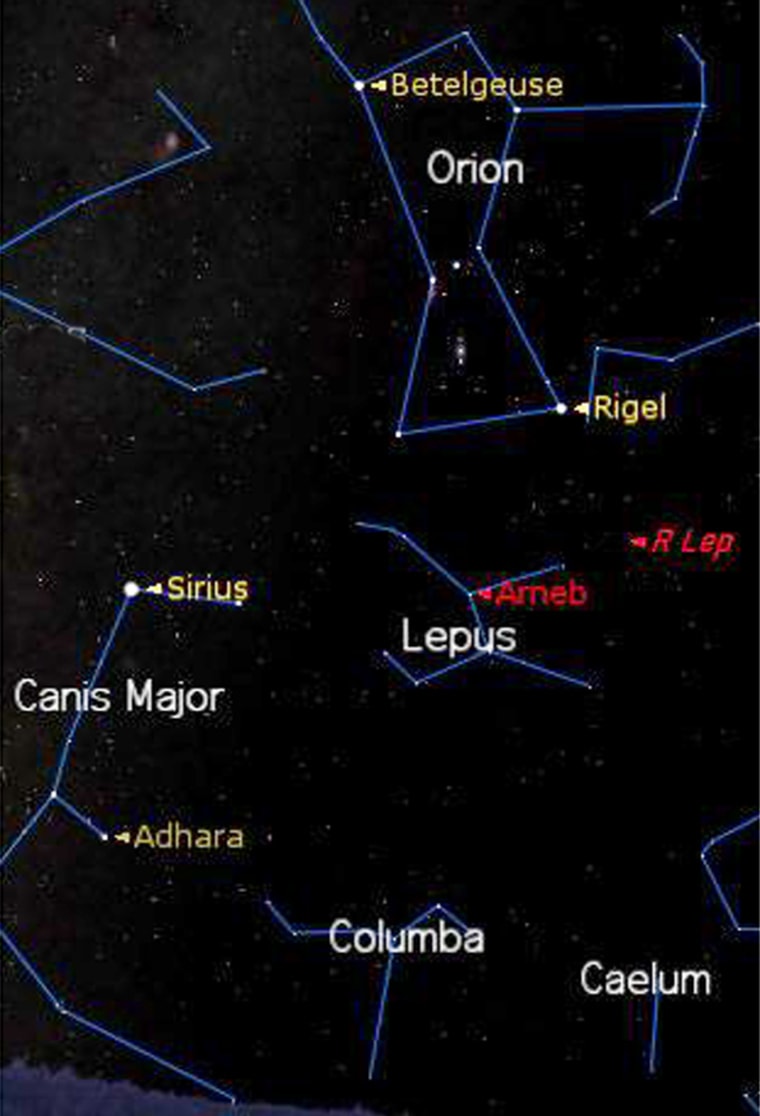The attention of many skywatchers is now drawn to the star pattern that always takes center stage on cold wintry nights: Orion the Mighty Hunter. He represents the most spectacular star grouping of the winter season, the most brilliant constellation to be found anywhere in the sky.
Orion tends to draw attention away from some of nearby dimmer groups, such as the two somber figures that lie beneath it: Lepus the Hare, and Columba the Dove.
Lepus is composed of a modest group of faint stars that seem to be arranged in the shape of a bow tie. The sword of Orion points toward it. It’s an ancient pattern, and a surprising number of early peoples tended to associate this celestial Hare with the moon, although to the Arabs the brighter stars in a crude rectangle represented four camels quenching their thirst. Since Orion particularly liked hunting hares, it seemed appropriate to place one below his feet in the sky.
Its brightest star, Arneb, is a double star whose components are about 3
The pairing of these two stars is likely an illusion of sorts. The fainter companion is probably not a true physical companion but only appears that way because it just happens to be in the same line of sight as seen from Earth.
One interesting variable is labeled R Leporis. It is often compared to Mira Ceti, the "Wonderful Star" of Cetus the Whale, because, like Mira, R Leporis appears to pulsate in size and has an irregular period of roughly 432 days, varying in brightness between about 7
The variable star was first noted in October 1845 by the astronomer J.R. Hind of London, who described it as "the most intense crimson, resembling a blood-drop on the black background of the sky." Other observers have noted that it appears as "an intense smoky red; a glowing coal; a ruby." Observing it nearly a century ago (in 1905), Agnes Clerke remarked that even the ruddy colors of Antares and Betelgeuse were "mere pale shades" when compared with the wine-red hue of R Leporis.
Hind’s Crimson Star is a very cool giant, ranging from 3,500 to 4,000 degrees Fahrenheit (1,900 to 2,200 Celsius). Its spectrum shows that it belongs to a rare class of stars referred to as spectral class N – and shows very strong features of molecular carbon.
